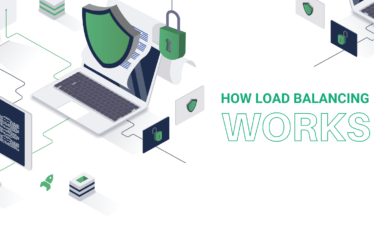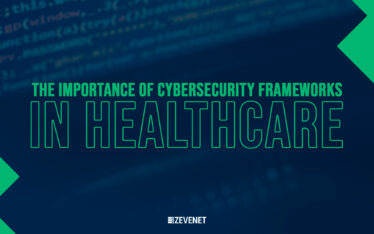
Is there a difference between the concept of load balancing and content switching in web applications? Load balancers distribute requests across multiple servers to handle more traffic than one server could by itself.
It allows you to scale your web applications without adding additional hardware or software. In addition, load balancing enables you to use fewer resources than would otherwise be required if all incoming requests were handled by just one server.
Content switching, on the other hand, refers to redirecting users from one page to another when the current server cannot serve their request. In this article, we will cover the difference between the two concepts.
Load Balancing Overview
A load balancer distributes incoming requests among several servers. It does not decide which server should answer a particular request. Instead, it simply forwards the request to an available server. A load balancer typically uses round-robin scheduling, where each time a new request comes in, it sends the request to the next available server.
The load balancer needs to know what IP address to send the request to achieve this functionality. Therefore, the load balancer must have access to configuration information.
For example, a load balancer may need to know the name of the machine hosting the web application, its IP address, port number, etc.
Load balancers also provide other features such as SSL termination, caching, monitoring, failover, etc. These features are described in detail later in the article.
Load Balancing Types
There are three types of load balancing used today: Round Robin (RR), Weighted Random (WR), and Least Connections (LC).Round Robin (RR):
This type of load balancing works like a rotary dial telephone system. When a call comes into the switch, it goes through connections until it reaches the destination. Each connection has a certain weight associated with it.
If there are no free connections left, then the call is dropped. With RR, the weights assigned to the different connections vary over time. As a result, the calls are distributed evenly across the available servers.
Weighted Random (WR): Assigns a fixed percentage of the total bandwidth to each server. So, if there are 10 servers and 5% of the total bandwidth is allocated, each server gets 5% of the total capacity. It means that the first server will get 50% of the capacity, the second server will get 25%, etc. Least Connections (LC):
With LC, the load balancer only sends requests to the least busy server. If all the servers are equally busy, the load balancer will always choose the least loaded server.
The main advantage of WR is that it provides better performance because it doesn’t require any special settings on the servers. However, it requires more memory and CPU cycles than RR. The main disadvantage of WR is that it can cause problems if the workloads on the servers change significantly.
Content switching overview
When a user requests a specific URL, he/she expects to see content at that location. But sometimes, due to network problems, the request might not reach the server that hosts the requested resource.
In these cases, the user receives a message saying that the page cannot be found or that the server is temporarily unavailable. It is called the “404 Not Found” error. To avoid this problem, you can use a technique called “Content switching.” With content switching, when a request for a specific resource fails, the load balancer redirects the client’s request to another server that hosts the same resource. This way, the user never sees 404 errors.
Your load balancer needs to understand how to perform redirection to implement content switching. It does so by using an HTTP response code called 302. A 302 response tells the browser to make a new request to a different location.
In addition, the load balancer should be able to determine which resources are hosted on which servers. To do this, it uses a feature called DNS Name Server (DNS NS). DNS NS translates hostnames into IP addresses. The load balancer must access information about the website’s DNS configuration to achieve content switching. For example, it needs to know where the DNS name server is located and its IP address.
It is done by configuring the load balancer as a DNS forwarder. You configure the DNS forwarder to send queries to the appropriate DNS name server.
Once the DNS forwarder knows where the DNS name server resides, it forwards the query to the server. After receiving the reply from the DNS name server, the load balancer returns the IP address of the server hosting the requested resource.
It is important to note that virtual servers don’t support content switching. They return a 404 status code.
A virtual server is a logical representation of one physical server. Each virtual server has its IP address and port number. Virtual servers are used to provide fault tolerance. When a virtual server goes down, the traffic directed to it is redirected to another physical server.
The difference between Load Balancing and Content switching
In Load balancing, all requests go through the same path. So there will always be only one copy of the data in the cache. If the first server becomes overloaded, other servers get less work. In Content switching, each request goes to a separate path. So there will be multiple copies of the data in the caches. And if the first server becomes overloaded, other servers get more work to do.
In Load balancing, the load balancer keeps track of the health of each server. If a server stops responding, it warns the load balancer. The load balancer then removes that server from the service. In Content switching, the load balancers keep track of the health of the servers. But they don’t send warnings to the clients. Instead, they redirect the requests to other servers.
In Load balancing, if a server crashes, the load balancer sends a message to the client that their request failed. In Content switching, if a server crashes, the load balancer doesn’t tell the client anything.
In Load balancing, when a server comes back up, the load balancer tries to figure out why it crashed. Then it can decide whether or not to put it back online. In content switching, the load balancers assume that everything is fine when a server comes up. There is no need for it to check why it came back up. It just starts sending new requests to it.
In Load balancing, you can set how many times the client gets an error before it gives up trying to reach your website. In content switching, you can’t control how long the client waits before giving up on reaching your website.
In Load balancing, a single server failure can cause problems with some applications. A good example would be a shopping cart application. If a user places an item into the cart but then leaves without checking out, the order is not completed.
In Content switching, a single server failure won’t affect any applications.
Conclusion
Load Balancing is better than Content Switching because it has fewer limitations and provides better performance. The overall programs are very similar, except that the load balancer will handle all the connections while the content switcher will only handle the connections coming from the same IP address. However, both have advantages and disadvantages. It is important to know what they are before using them.
THANKS TO:
Geri Mileva



